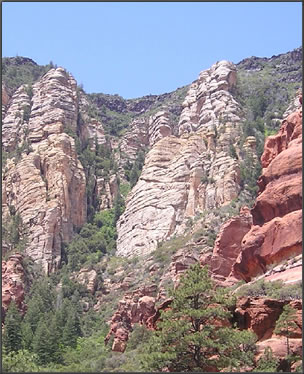Coconino Sandstone Myths Debunked
Some secular geologists are claiming that the Coconino Sandstone refutes Genesis Flood geology because there is no way that it could have been formed under water. Interestingly, geologists hang their hats on uniformitarian geology despite the numerous problems with their own hypotheses. So, what's going on?
The problem is that the geologists only gave superficial examinations before they came up with their myths. Once again, creationists have to do the heavy lifting and refute their refutations.
 |
| Coconino Sandstone (center) / Image credit: US Department of Agriculture Forestry Service |
When creationists suggest that a worldwide Flood deposited all the layers in the Grand Canyon, secular geologists laugh. “That can’t be,” they say, “because one of the canyon’s major layers was formed in a desert over millions of years. It’s filled with fossilized sand dunes, which are windblown deposits that have hardened into stone. You can’t deposit desert sands during a global flood!”To read the rest, click on "Coconino Sandstone—The Most Powerful Argument Against the Flood?"
The Coconino Sandstone (Figure 1a), whose buff-colored sand piles up as thick as 300 feet (90 m) in the Grand Canyon area and 1,000 feet (300 m) in other areas, is one of the most common evidences raised against the Genesis Flood. The arguments sound pretty compelling. So nearly a decade ago, I joined a team of creation geologists in an unprecedented research project to examine the claims firsthand, including dozens of field trips and careful laboratory work.